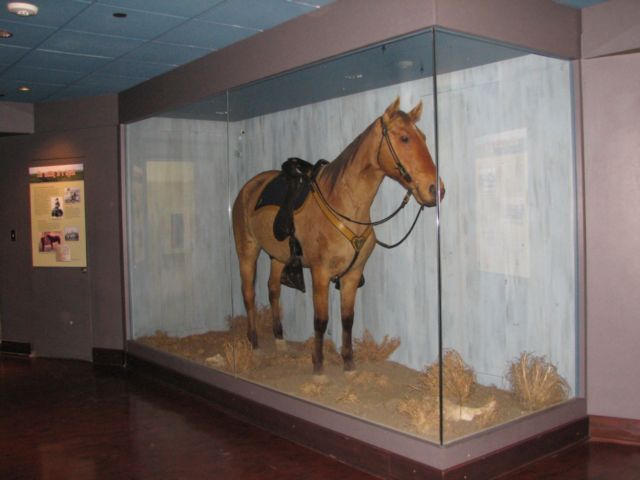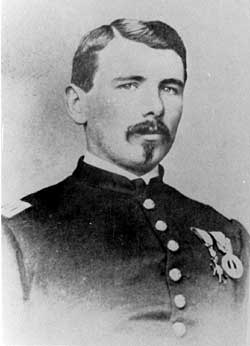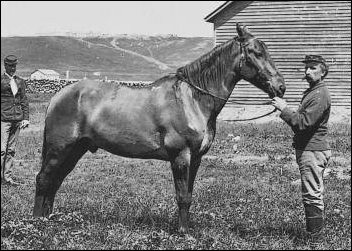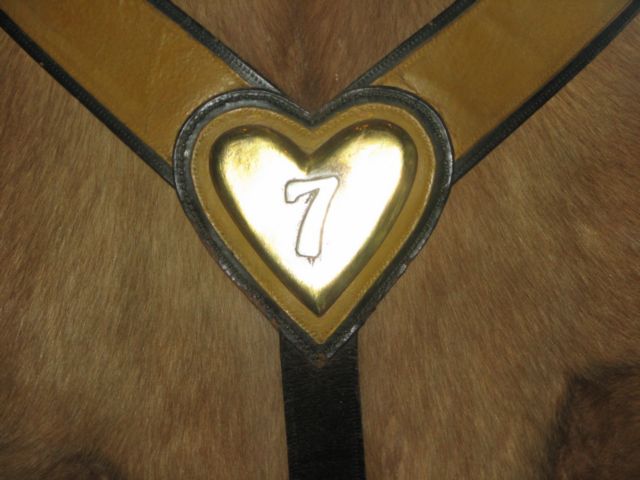|

Where
the Battle of the Little Big Horn began . . .
Garryowen, Montana
Comanche: Custer
Column's Sole Battle Survivor

Comanche Restoration
Project
University of Kansas
naturalist Lewis Lindsay Dyche prepared Comanche for exhibition
at the World's Fair in Chicago in 1893. Following the
fair, Comanche was returned to the KU Natural History Museum.
Following a major restoration and conservation effort in 2004,
the museum began exhibiting Comanche in a new exhibit, where the
horse remains today as a popular attraction. (Photo KUNHM)
Comanche (1862-1891)
was a 15 hand buckskin bay gelding, and the sole survivor of
Custer's column from the
Battle
of the Little Big Horn. He was purchased by the U.S. Army
in 1868 in St. Louis,
Missouri, and was sent to Fort Leavenworth, Kansas, where he
became the personal mount of Captain Myles Keogh of the 7th
Cavalry. During his military service, Comanche was wounded
several times, and was admired for his bravery and toughness.
Keogh rode Comanche
into battle on June 25, 1876, and was found two days later in a
ravine badly wounded, very weak and barely able to stand.
The horse suffered three severe wounds: through his neck,
through his front shoulder and to his hind quarter; and four
flesh wounds. Comanche was transported to Fort Lincoln
aboard the steamer the Far West along with other casualties.
He was slowly nursed back to health, retired, and orders were
given that he should never be ridden again.
Comanche
was eventually sent to Fort Riley, Kansas. He acted as a
regimental mascot and occasionally lead parades until his death
in 1891. His remains were sent to the University of Kansas
in Lawrence, where they were preserved and mounted.
Learn
more about the Comanche Restoration Project
University of Kansas Natural History Museum
|




